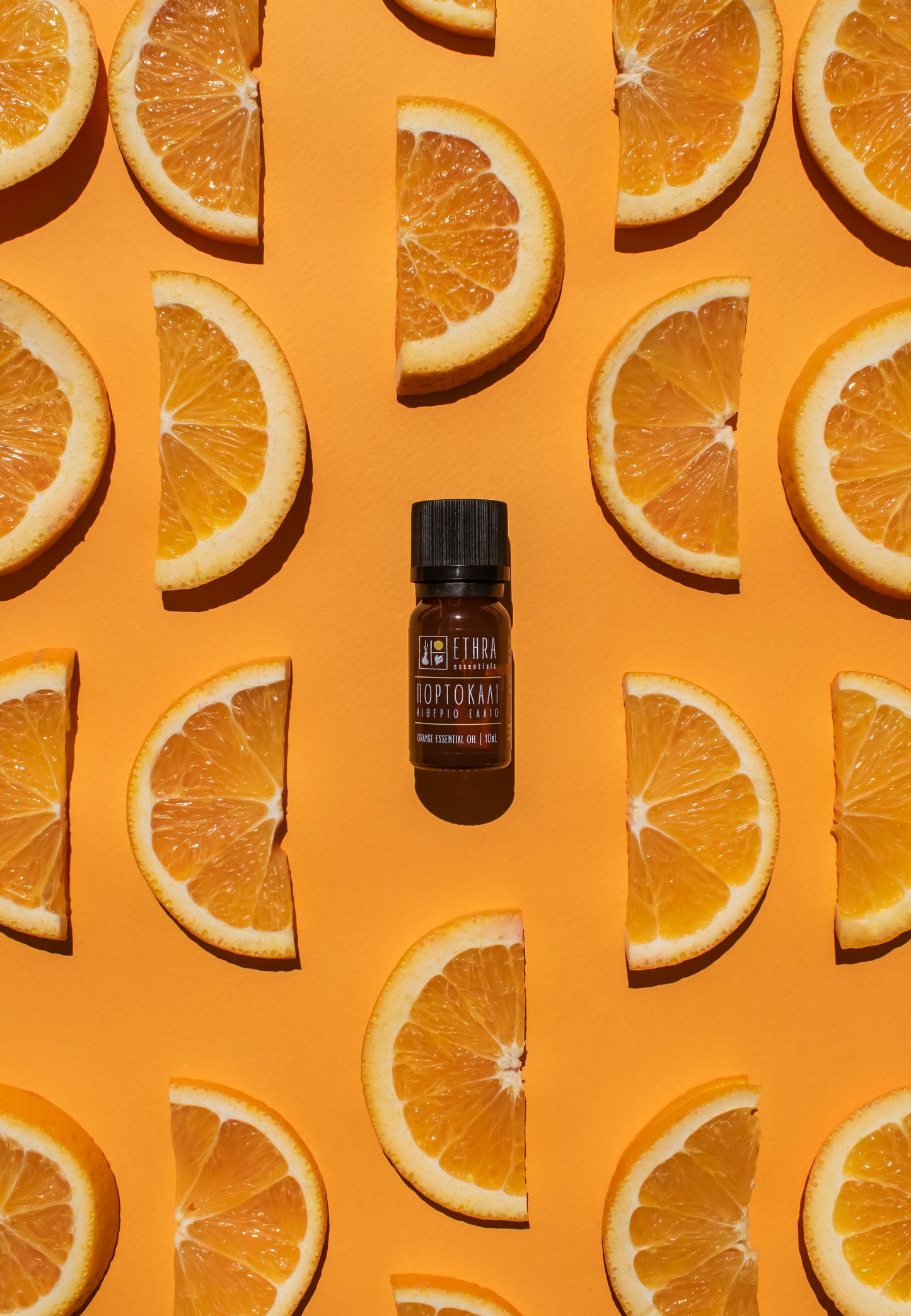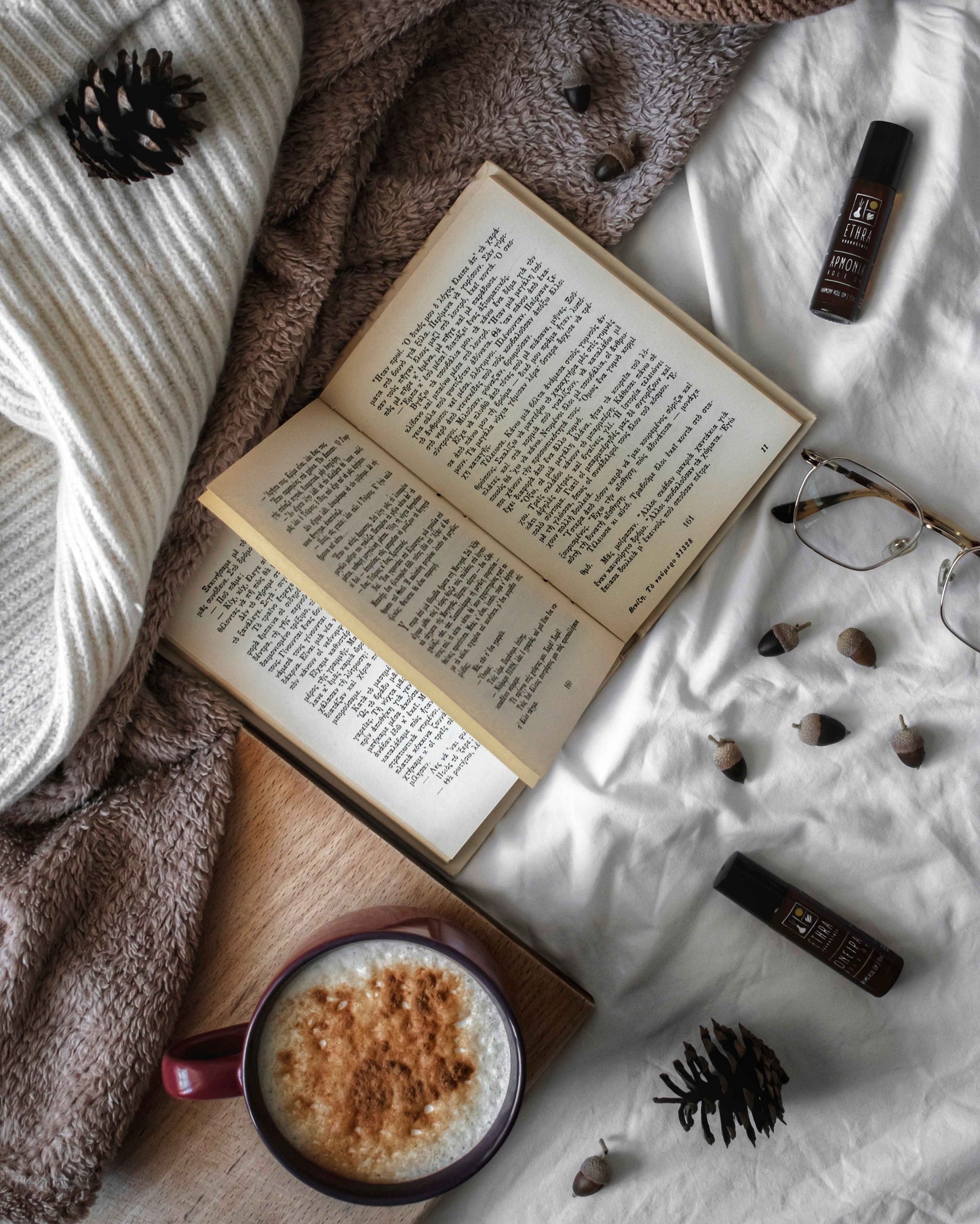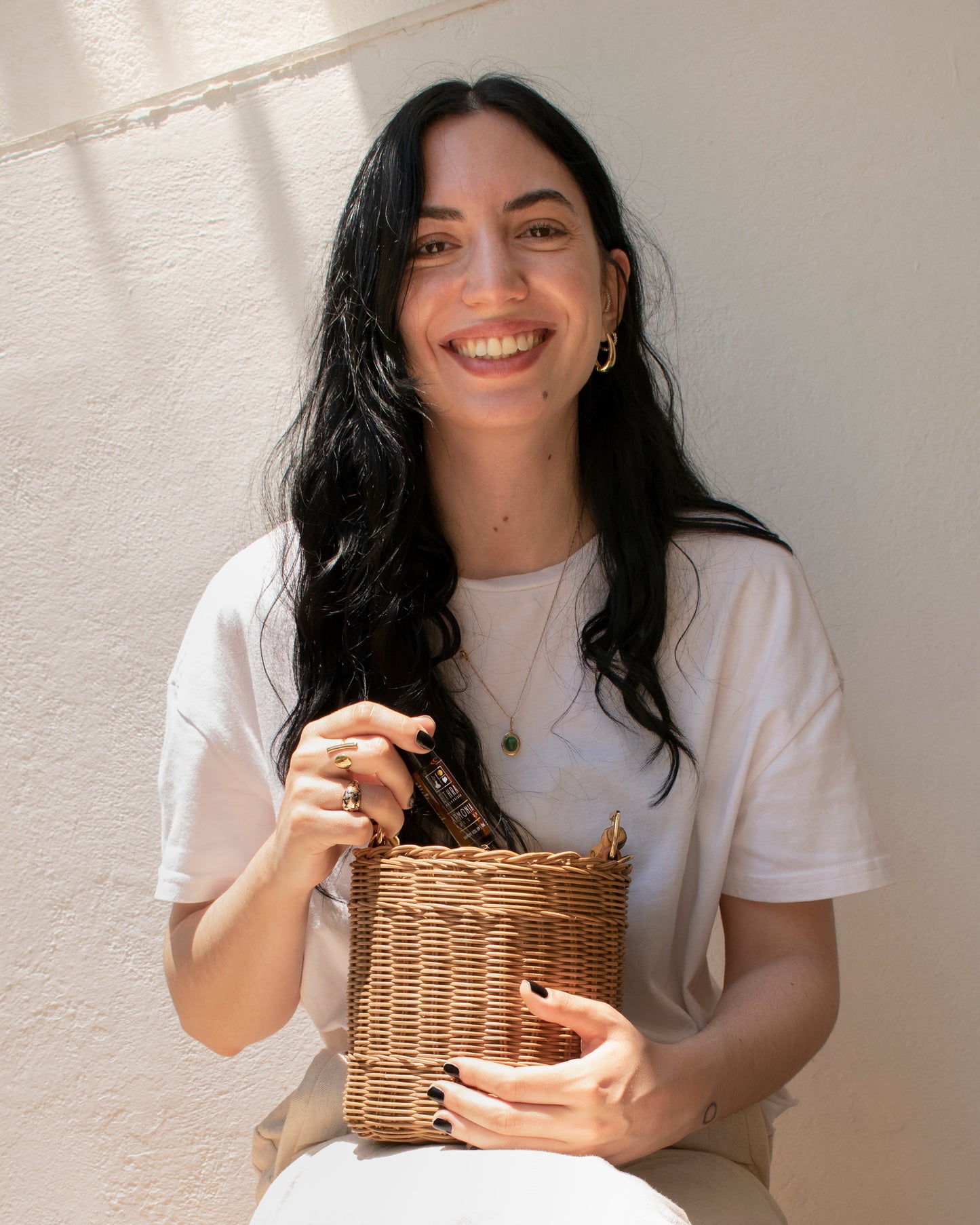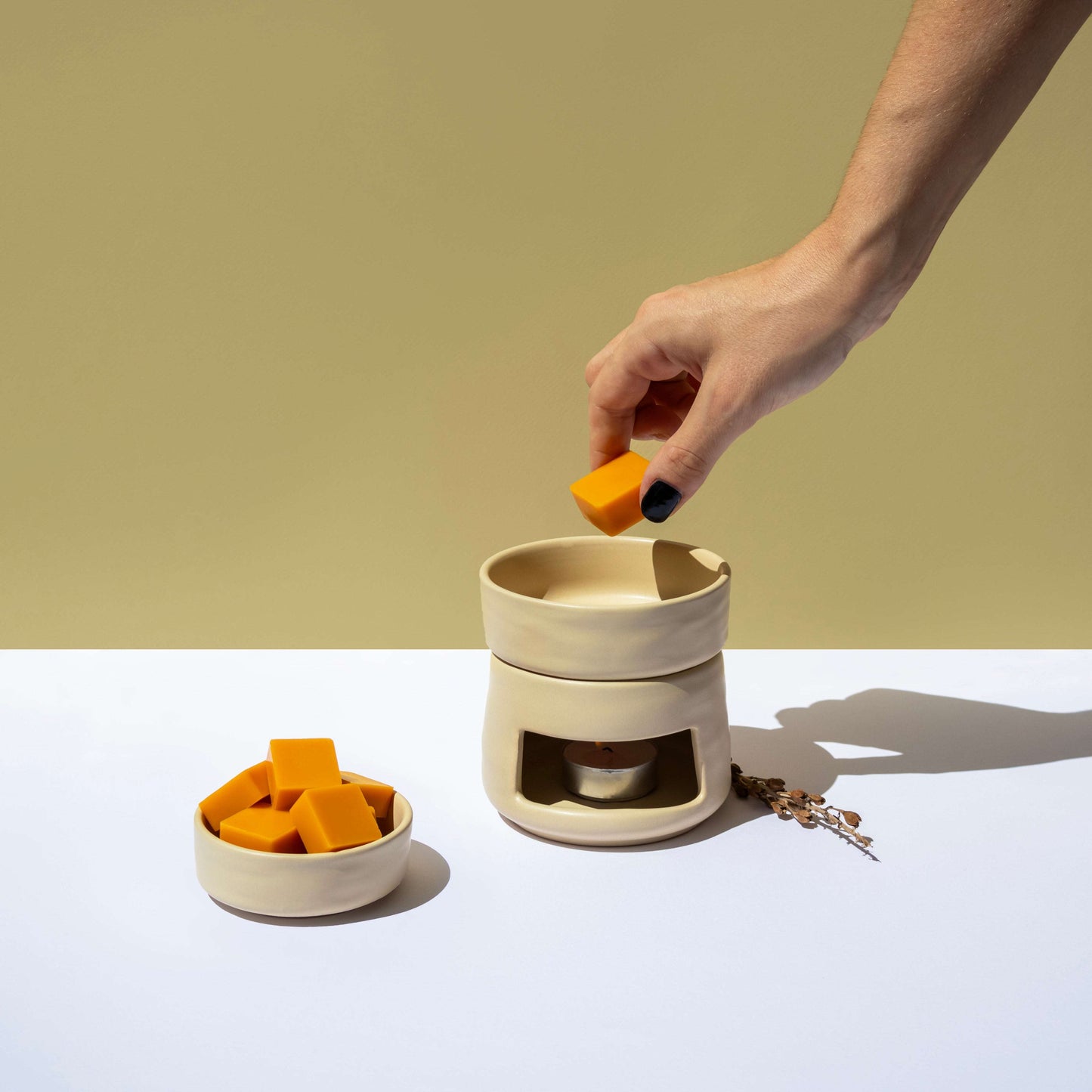Find them at a -15% discount with the purchase of 5 essential oils or more!
Soy candles are sustainable and ecological candles made from natural soy wax, which comes from renewable soy crops. Unlike traditional paraffin candles, which are made from petroleum, soy candles are biodegradable and produce less smoke and soot, making them friendlier to the environment and indoors.
Why choose them:
- Natural material: Made from renewable raw materials.
- Clean burning: They produce less smoke, resulting in cleaner air in the room.
- Longer duration: They burn more slowly, so they last longer.
- Excellent aromatic performance: They retain and diffuse the aromas better, giving a pleasant atmosphere in the room.
Parabens are preservatives used in cosmetics and personal care products to protect them from the growth of microorganisms and extend their shelf life. Some examples are methylparaben and propylparaben.
Why we prefer to avoid them:
- Hormonal balance: Parabens have estrogen-like properties, which is why there is scientific interest in understanding their effect on the endocrine system.
- Sensitivity: In some cases, especially on sensitive skins, they may cause slight irritation or an allergic reaction.
- Choosing more natural alternatives: Because we are increasingly looking for natural formulations, our candles are paraben free. So avoiding parabens is simply an option for more natural care , ideal for those looking for products without synthetic preservatives.
Our sense of smell is the most primitive sense and is connected to the deepest parts of the brain.
As we inhale any fragrance, it can evoke emotional and physical reactions while allowing the recall of people and moments.
When we inhale scent molecules, they travel to the tip of the nose, where they come into contact with specialized nerve cells called olfactory cells.
Olfactory cells have tiny hairs that recognize a specific scent through a "lock and key" process.
The " lock and key " is the process in which each hair only recognizes a specific and unique scent. Nerve impulses (signals) are produced that travel to the limbic system, the part of the brain that has to do with survival, instincts and emotions.
Aromatherapy is a branch of herbal medicine and refers to the use of essential oils for health and well-being.
The simplest way of aromatherapy is to inhale essential oils. Through the sense of smell, the essential oil reaches the brain centers and affects our emotions and behavior. E.g. a drop of lavender essential oil on the pillow helps to sleep well, without side effects and physical dependence.
Aromatherapy is both an art and a science.
People have used it for thousands of years. Ancient cultures in Greece, China, India, Egypt and elsewhere incorporated aromatic plant ingredients into resins, balms and oils. So these natural substances were used for medical and religious purposes. It was known since then that they had both physical and psychological benefits .
The first to distill essential oils appear to have been the Persians in the 10th century, although the practice may have been in use long before that. The first information about the distillation of essential oils was published in Germany in the 16th century. It was French doctors who recognized in the 19th century the potential of essential oils to cure diseases.
The term " aromatherapy " was coined in 1937 by René-Maurice Gattefossé, a French perfumer and chemist.
Essential oils are considered the most "intelligent" and most active substances in nature.
They are mixtures of many organic substances . They can be found in leaves, stems, flowers, flowering buds, fruits and seeds.
They exist in plants to protect them from pests, diseases, high temperatures, cold, while at the same time they cover bark wounds (avoid rotting) and with their overpowering aroma they attract insects for pollination.
The most important group of substances they contain are terpenoids . Terpenoids produced by plants are widely used for their aromatic properties and play a very important role as therapeutic agents in traditional medicine.
The methods used to obtain the essential oils are:
Distillation - the simplest and most widely used
Although it is comparatively the simplest method, it is a difficult and delicate process, because it aims to capture the most delicate and fragile substances of the plants, avoiding to degrade their quality.
Extraction - for essential oils of great economic value
We use it to extract the aromatic essences from very sensitive flowers such as jasmine. These substances are called absolutes.
Mechanical Pick-up - for nuts and citrus peels
We extract the essential oils from the skins of citrus fruits (e.g. lemons, oranges, etc.) by mechanical pressing, i.e. we subject the fruits to strong pressure.
Aromatherapy works through smell and skin absorption using products such as:
- Aroma diffusers
- Bath salts
- Aromatic soaps
- Body oils/creams/lotions with essential oils
- Hot/Cold compresses infused with essential oils
- Clay masks
Some of the benefits of aromatherapy are as follows:
- Pain management
- Improving sleep quality
- Reducing stress and tension
- Soothing irritated joints
- Treatment of headaches and migraines
Essential oils act:
- immediate
- with almost no side effects
- compatible with all other treatments
Most essential oils are safe to use.
However, there are some precautions to take when using them, as well as side effects to be aware of, especially if you are taking any prescription medications.
- Do not use directly on skin
We do not apply them directly to the skin. We need to dilute them in some base/carrier oil as they are strong substances.
- Sun avoidance
Some essential oils like those of citrus can make our skin more sensitive to the sun. - Caution for children, pregnant women, nursing mothers and pets
Children should be supervised, and pregnant or lactating women should seek their doctor's opinion before using. In addition, we should be careful with our little friends, the animals, as they are sensitive to some of them. - Beware of allergies
A small number of people may experience irritation or allergic reactions to certain essential oils. Remember to do a skin patch before using them. - Most important of all - we use essential oils exclusively for external use.
Sure! If you're looking for ambiance and fragrance in your space without worrying about your pets, soy candles are a great choice. They are made from natural soy wax, which burns cleaner and produces less smoke and soot, making the area safer for animals and people. In addition, the perfumes we choose are IFRA certified, paraben and phthalate free.























































